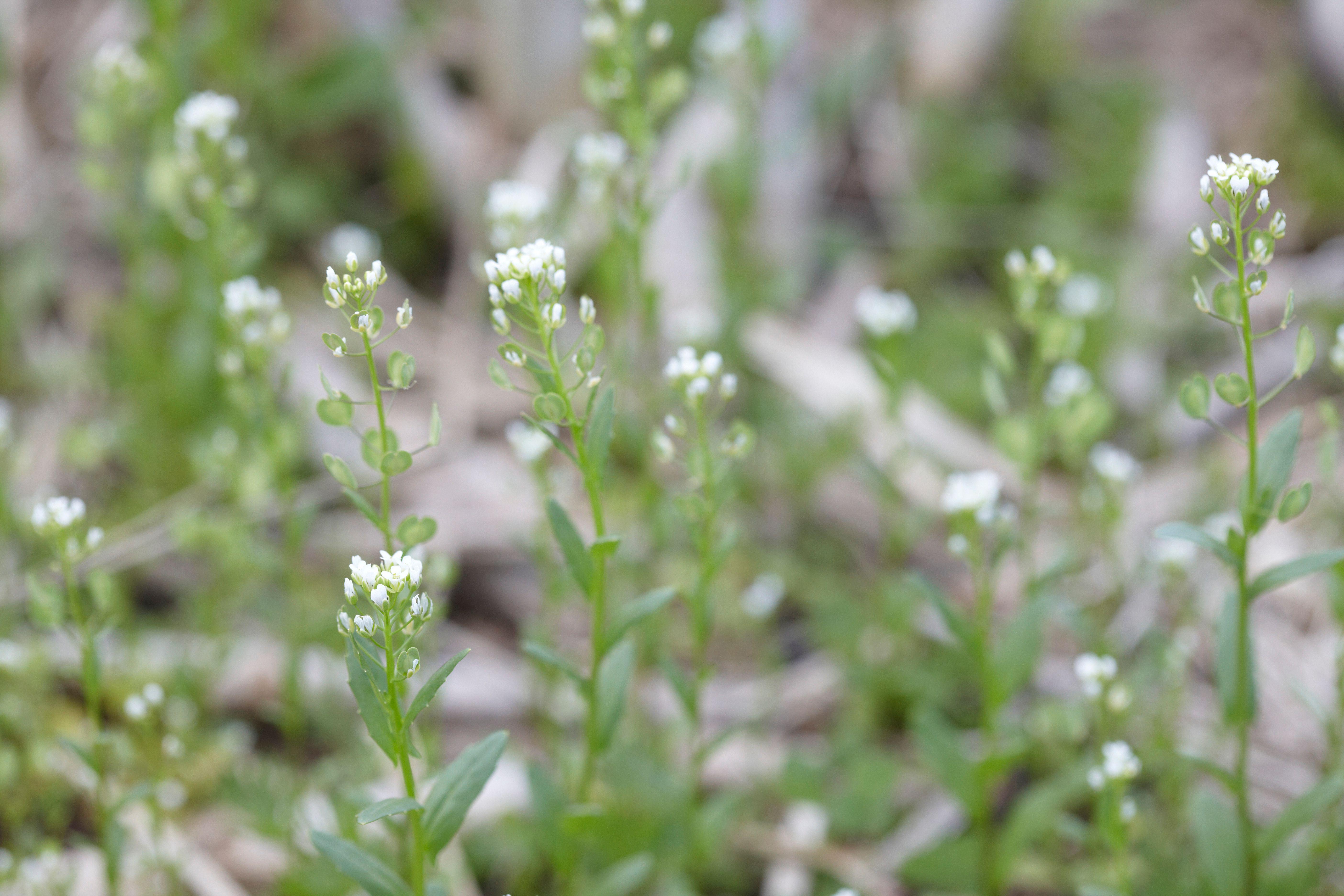Key Takeaways
- Garlic mustard is considered invasive in many areas because it spreads fast and crowds out native plants.
- Identify this biennial plant by the shape of its leaves, which smell garlicky when crushed, and by its white spring flowers.
- Remove garlic mustard before it sets seeds by hand pulling plants, cutting the roots, cutting off the flowers, or using herbicides.
Garlic mustard is a problem in dozens of states, considered an invasive species in some, a noxious weed in others. Its notoriety is well deserved. Garlic mustard is a rapidly spreading, highly aggressive weed that pushes out valuable native plants, creating an ecologically damaging monoculture. Here’s how to deal with this plant pest before it takes over your yard.
What Is Garlic Mustard?
It’s hard to say which garlic mustard has more of: catchy nicknames or unappealing traits. Botanically known as Alliaria petiolate, this aggressive non-native herb also goes by the names hedge garlic, poor man’s mustard, garlicwort, and jack-in-the-hedge, among others. Although it’s not the ugliest plant when in bloom in spring, those tiny flowers are a harbinger of bad things to come. Soon after they fade, a tidal wave of seeds develops, spreading the plant even more.
Originally from Europe and Asia, garlic mustard was originally introduced to North America in the 19th century for its herbal and medicinal uses and as an option for erosion control. It's primarily found in the Northeast, Midwest, and Northwest and has spread to 37 states and 6 Canadian provinces.
How Garlic Mustard Grows
Just one plant can produce more than 7,000 seeds during its short life. With so many seeds, garlic mustard quickly forms dense stands that out-compete native vegetation. Emerging earlier than many other plants, it shades out native plants, and before long, has the upper hand in the competition for nutrients and moisture.
Although it prefers moist, well-drained soil, garlic mustard is extremely adaptable. In addition to various soils, it also accepts a range of lighting conditions from full sun to full shade. And if that isn’t enough to ensure its dominance, garlic mustard has one more trick up its sleeve: It's allelopathic. This means its roots exude chemicals that suppress the growth of nearby plants, including tree seedlings needed for forest regeneration.
The resulting monoculture harms the biodiversity of native ecosystems. affects native insect populations, such as butterflies, looking for food sources and plants to lay eggs on.
Related
Identifying Garlic Mustard
Garlic mustard is a biennial, so it forms short rosettes of leaves at ground level the first year, then shoots up flowering stems 2-3 feet the second year. Leaf shape varies, depending on the age of the plant. First-year leaves are rounder with scalloped edges. By the second year, leaves become more triangular and heart-shaped with sharply toothed edges.
Garlic mustard is easiest to identify in late spring of its second year when leafy stalks are topped with small, white, four-petal flowers. Other identifying features include a garlicky smell when leaves are crushed, and if you dig up a plant, you’ll see the white tap root has formed into an S shape near the top.
As biennials, garlic mustard plants only live two years, so it’s important to keep them from setting seed and starting a new generation. Here are the best ways to eradicate garlic mustard and stop them from going to seed.
1. Manual Removal
The best way is also the simplest: hand-pull plants, preferably after rain when it’s easier to extract the tap root. Pull at the base of the plant and try to remove all of the tap root. If possible, remove garlic mustard before it flowers. Once seeds develop, they easily burst and disperse from the long, thin seedpods, so pulling up a plant can inadvertently sow the next generation.
2. Slice the Taproot
Use a sharp space to sever the plant's tap root 1-2 inches deep. This removes the crown of the plant, which can resprout new stalks if left in place.
3. Remove the Flowers
When you see garlic mustard starting to flower, cut or mow them down before they set seed. Do this throughout the spring flowering season, as additional flowers may form after your first session.
4. Apply Herbicide
Use a non-selective product such as glyphosate, following label directions. Treat the foliage, but not so heavily that the herbicide drips on the ground. Apply on a calm day and use a shield such as a large piece of cardboard to avoid overspray that may damage other plants. Spraying weed killer in early spring or late fall, when other plants are dormant, will also reduce damage to nearby plants.
Even if existing plants are prevented from developing seed, there’s still an existing seed bank in the ground, and those seeds can remain viable up to five years. It will be important to continue monitoring the site and removing any new seedlings that emerge until the seed bank is exhausted.
Disposing of Garlic Mustard
Don’t leave plants on the ground, because pulled plants can still produce mature seeds. Also, don’t try to compost garlic mustard or put it out for collection by municipal compost sources, because composting may not reach temperatures hot enough to kill the seeds.
Instead, place garlic mustard in a sealed plastic bag, label as “invasive plants,” and put in the trash. Large amounts can be secured under heavy, dark-colored plastic tarps to allow solar heat to kill the seeds, but this requires time (has to be done for a year or more) and space (can be unsightly and therefore best hidden from view).



